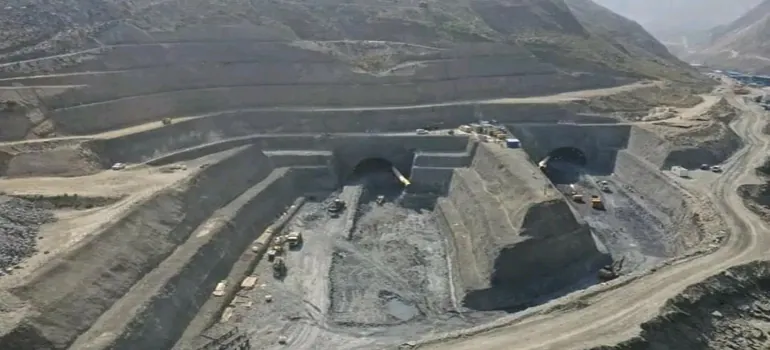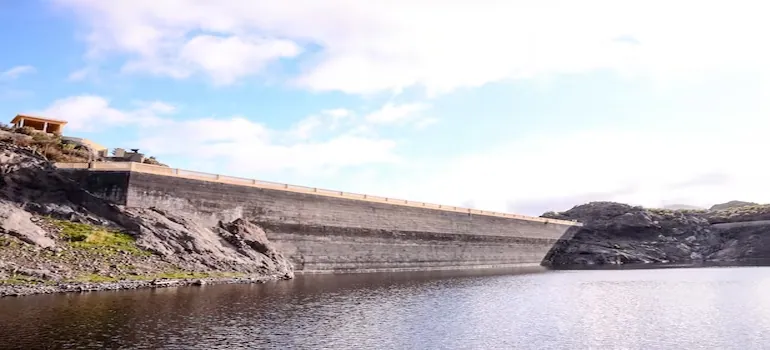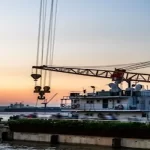
Dams and Hydropower Projects update in Pakistan
Pakistan has shown ambition and vision in its efforts to develop its hydropower resources and construct essential dams. These initiatives, which benefit from an abundance of water resources, are essential to managing water resources, alleviating the country’s energy deficiencies, and promoting sustainable agriculture. Pakistan has been aggressively pursuing the building of dams and hydropower projects in order to secure its energy future and promote economic growth in recent years.
This article examines the initiatives’ advancements, the global collaboration behind them, the difficulties they face, and the environmental issues they need to address. Pakistan has been actively pursuing the construction of dams and hydroelectric projects to meet its expanding energy needs, water management needs, and agricultural requirements. Pakistan is a country blessed with an abundance of water resources. This article explores the importance, development, difficulties, and possibilities of these projects.
Towards the Future
Pakistan’s hydropower and dam projects seem to have a bright future. An enormous project on the Indus River called the Diamer-Bhasha Dam is a ray of optimism. When finished, it is expected to produce a significant 4,500 MW of power and have a storage capacity of over 8 million acre-feet. Additionally, a number of projects, like the Mohmand Dam and the Dasu Hydropower Project, are expected to have a major impact on Pakistan’s energy balance. Along with the promise of energy security, these projects also present the possibility of economic expansion through the construction of infrastructure and the creation of jobs.
- Advertisement -
The Significance of Hydroelectricity
An important part of Pakistan’s energy mix is hydropower, a clean and renewable energy source. It helps to preserve the environment in addition to lowering dependency on fossil fuels. Pakistan has a distinct edge when it comes to the utilization of hydropower due to the Indus River system, which is nourished by the runoff from the Himalayas and Karakoram.
Large-scale hydropower projects and dams:
This enormous project is one of Pakistan’s biggest dams and is situated on the Indus River. When finished, it will produce 4,500 megawatts of electricity and have 6.4 million acre-feet of storage, which will be advantageous for both agriculture and the energy industry.
- Dam Mohmand
The Mohmand Dam project, which is situated on the Swat River, proposes to store water and produce 800 MW of energy. It will also support irrigation and flood control.
- Project Dasu Hydropower
The Dasu project, located in the Kohistan district, is anticipated to generate 2,160 MW of power. Building it is a vital first step in meeting Pakistan’s energy needs.
- Neelum-Jhelum Hydropower Project:
By lowering the nation’s dependency on pricey thermal power, this project in Azad Kashmir has already begun to produce 969 MW of electricity. Dams and Hydropower Projects update

International Cooperation
Pakistan’s pursuit of hydropower and dam projects has been firmly anchored by international cooperation. With China offering significant financial and technical help, the China-Pakistan Economic Corridor (CPEC) has become a cornerstone. The building of Gwadar Port, which is supported by China, is one of the many projects that have been made possible by the collaboration under CPEC. Moreover, the World Bank and other global institutions have played a crucial role in offering funding and proficiency. This partnership is essential to the success of these projects since it not only improves Pakistan’s infrastructure but also boosts diplomatic relations and promotes economic growth.
Advantages of These Initiatives
- Security of Energy
By building these dams and hydropower projects, Pakistan is able to become less reliant on fossil fuels and increase its energy security. Dams and Hydropower Projects update
- Handling of Water
By implementing these projects, water management can be effectively managed to reduce floods, supply irrigation water, and promote agriculture.
- Economic Development
These initiatives boost local economies and generate employment possibilities in the areas where they are located.
Difficulties and Environmental Issues
These projects have several obstacles in spite of their potential. Budgetary restrictions and cost overruns continue to be major obstacles in the way of financing progress. Dam construction has resulted in soil erosion, altered river flow, and disturbance of natural habitats. In addition, the uprooting of indigenous populations gives rise to ethical and social concerns, which calls for thorough relocation strategies. It is critical to address these issues because achieving sustainable development requires reducing the negative effects of these enormous undertakings on the environment and society.

Conclusion
Pakistan’s hydropower and dam projects are essential for a more sustainable and optimistic future (110 words). Even though they are critical for managing water resources, fostering economic expansion, and ensuring energy security, it is crucial to confront obstacles and environmental issues. The CPEC is a wonderful example of international cooperation, which is still essential. Pakistan is expected to make significant strides in energy production, water resource management, and general growth, with a plethora of projects in the works that would ensure the country’s prosperity in the future. Dams and Hydropower Projects update
FAQs
Why do these projects matter so much?
These initiatives help manage water resources better, meet Pakistan’s energy needs, and encourage the expansion of agriculture.
Which projects are the big ones?
Among the noteworthy projects are Neelum-Jhelum, Dasu, Mohmand Dam, and Diamer-Bhasha. Dams and Hydropower Projects update.
What role does international collaboration play?
China is a major financial and technical contributor to the China-Pakistan Economic Corridor (CPEC), which is crucial.
What environmental issues are there?
The construction of dams may cause habitat damage and local community displacement, necessitating careful planning and mitigating strategies.
More Read Gwadar-port-update-in-pakistan-2023







